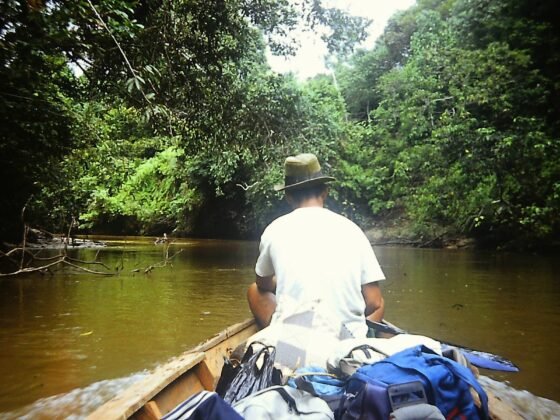The Intercoastal Waterway allows a daring soul to travel from Brownsville, Texas to Boston, Massachusetts by boat. If you have the time, the boat, and the chutzpah to make the trip, here are some key suggestions to make it a great adventure.
A Comfortable Boat
The boat you choose is as personal a decision as choosing your spouse. Well, not quite, but it is pretty significant. Your budget is probably the most significant limiting factor in your decision. Your budget doesn’t just include the up-front cost, but has to include operating, slip, repair, and maintenance.
Big boats equal big costs, but that can equal big comfort. If you don’t have a big budget, look for the most comfort you can afford. Look for good galleys (kitchens) and heads (potties). You’re going to spend a whole pile of time on this boat, so make sure there’s some elbow room.
Sailboats with an an outboard motor are an inexpensive entry point for the cruiser. 20’ length boats are about the smallest for comfort and safety, a 30’ plus boat allows for room and comfort, but can still be had for a reasonable price.
Mechanically Sound
Unless you are looking to create an amazing story of survival against all odds, you will want a boat that isn’t constantly sinking and has a reasonable level of mechanical/electrical reliability.
Look at the hull for blemishes and repairs. Check the decks for soundness and cracking. Check the fittings for secure mounting and operation.
If you choose a sailboat, is the rigging in good repair and is it functional. How old is your outboard? (You will be under power a significant amount of time.) Do you have a generator and what condition is it in?
If you choose a powered cruiser, know your engine. Is it diesel or gas, how many hours are on it and when was it last serviced? Engine failure can wreck your entire trip, so keep up your maintenance.
If you do have breakdowns (and you will), selecting a great marina is important. Developing a list of contacts, based on the cities you are going through, will help you know who to call based on your location.
Are you a Captain or a Mate
How much have you operated a boat before? If you are new to cruising and have chosen to go big (over 40’), it’s worth hiring a captain to train you before you start out on this sojourn. Knowing the rules of the water, signage, safety requirements, and what to do in an emergency could save your life. Proper training will save you thousands in repair costs and make you a safer traveler.
Plan your Route
Know where you want to go and know how you are going to get there. Estimate your average speed per hour, divide your total mileage by that speed and determine your average distance per day. Add in a fudge factor for lolly-gagging and hiccups. Setting up an itinerary will help determine what you need for supplies, how to contact you, and where you are based on the time of year.
Hurricanes and weather can have a major impact on your enjoyment of the journey. Traveling through areas impacted by major seasonal storms during at the right time of the year will save you heartache and cost.
A Route you Can Enjoy
More than anything, plan a route that looks enjoyable. Spend time smelling the roses along the way. The total journey can be around 1,500 miles. If you travel on a slower boat at 6 miles an hour, 8 hours a day, the journey will be a minimum of 80 days. This isn’t a minor vacation; this is a complete change in lifestyle.
Embrace the pace, see the sights, take a step back in time and travel like the salty sea captain you long to be.












